What is the purpose of a profile and the stories within it?
Three of the basic purposes are
1) Documentation of experiences
2) Assessment of learning
3) Evaluation of teaching experiences to guide future teaching experiences.
They also serve a purpose to
4) Provide a guide to the reader of the values of the contributors, shaping their values in turn.
5) Provide a physical resource people can use as an inspiartion to share stories and make links with one another.
6) Be a teaching tool/ experience in itself. (Such as a literacy, language, numeracy and social artifact ) "Look there's you and Tracey playing together" Whose name is that one? "How many balls did you have?"
Compare more traditional question and answer testing.
Some things are supposedly easy to test, such as can a child add 1+1, or count to ten, you simply give them a written or oral question and voila there's your result, pass or fail. However the reality is they only give a summative assessment of a child's ability to answer the particular question, at the particular time, in the particular format.
An example of this can be seen in programmes like "Are you smarter than a fifth grader," where adults find they are no longer able to answer questions they would have once known the answer to. Knowing something in one circumstance were you are tested does not mean you will know it in another time and place.
Another example would be the anecdotal stories that filter back about the before school checks, and school reading checks. How children taken out of a familiar environment and tested by an unfamiliar person either refuse to participate or are unable to. Eg Assessor"can you count to ten?"
Child "No I don't know how to do that." Then later at home"Gran shall we count to ten you do the even I'll do the odd numbers."
(Hence the need for parents to speak up and feed into these tests, after all who knows a child best, a parent or some one who's just met them.)
Traditional tests also don't assess a person's ability to apply that knowledge in everyday life. Such as dividing a cake evenly or realising by using the square of the hypotenuse you could work out a measurement you need when building a fort.
Nor do these tests reveal much about underlying reasons for the results. "Why did they know this but not that, how could I help them to apply what they know?"
Also they don't usually show what stage of learning acquisition the person is at.
A)Are they exploring only just aware of a new skill to learn.
B)Aware of what they are doing wrong and exploring how to do it successfully.
C) Able to do it successfully if concentrating.
D) Able to do it successfully even while concentrating on other tasks.
E) Able to access and adapt the learning to other contexts.
F) Able to use it creatively to innovate new possibilities for it's use.
What can also confuse these tests is which intelligence is being tested, is it a person's logical mathematical intelligence after all or is it actually their socio cultural (are they comfortable sitting the test, uncomfortable, to comfortable) or linguistic intelligence ( did they understand the question and at what level)?
It is possible to create well designed tests and situations to provide more accurate feedback on the things mentioned above but with standardised assessment this is rarely the case as they tend to rely on the person fitting the mould, not the other way around.
Their other failing is they tend to test what is valued by the questioner when the test was designed, rather than what will be valuable to the learner. After all what is worth learning, what is valuable to the learner will change over time and between individuals and circumstances.
A test can reveal a specific focused piece of information, but fails to tell you about those things outside it's scope. It is like a traditional computer programme, efficent at what it does but non adaptive and non intuitive.
Do profiles do it better?
Profiles are designed to be holistic documents that can touch on every aspect of a child's life rather than taking a test's narrow focus. However they don't just look at the big picture of a person's life and learning either. In quatum physics there is a dilemma that something can be a wave and a particle, but you can only observe it as one thing or the other in any given observation.
Profiles aim at the twilight between the wave and the particle. They rely on the native intellegences and intutition of the people contributing to them. Their knowledge of the person being documented, their knowledge of the culture within which that person is learning, and their knowledge of people in general; to select, track and guide, significant moments and learning in that persons life.
After all knowledge is a cultural thing, "meaning" changes over time and constantly evolves.
They can also include test lenses, but rather than veiwing them in isolation place them into a context.
As well as documenting and assessing what learning is taking place, they evaluate the teaching and experiences contributing to it.
And profiles can assess and foster the underlying dispositions that will affect a person's take up of new skills, such as willingness to persevere.
Interestingly profiles however also provide a form of cultural feedback, they inform the reader (whether the child or an adult) about the cultural values of (what is valued by) the people writing the profile.
Why the eprofile rather than the paper one?
One of the key aspects of profiles is that in recognition of their intrinsic bias towards the values of the writers, they should include as many different voices and points of view as possible. This hopefully averages out the bias. Ideally profiles should be a partnership between all the involved parties.
In practise paper profiles have a limited presence. They can be here or there. While multiple copies can exist, as they are added to they rapidly lose synchronicity (what is in one version differs from what is in another.) Ownership and control of the profile tends to fall with people with whom it resides, typically those with the greatest familiarity in adding to it, the teachers.
This is evidenced in the ceremonies and rituals of our earlychildhood services. Parents signing profiles out, asking if they can borrow them, having them passed over when the child leaves.
Within the centre children have access to them but only under the guidelines the teachers impose. After all we as teachers don't want to see our work ruined.
Comparitavely an e profile can reside in many different settings at once, and as it is added to it has the potential for the knowledge shared to be instantaneously disseminated.
Further in their potential to include audio and video it opens up the ability for the person with limited literacy, to add to it, including the most important potential contributor, the child.
This open up the sources of information avaliable, to and for all the people in a person's life.
Difficulties.
Learning to view, use and contribute to an e profile however is a new skill for many of the people who could potentially be contributing to it. Already I've noticed most of the invitations we've sent out have not been taken up yet. This is after several days and even acknowledgements of receipt. A response typical of encountering a new skill. Whether the challenge is a technical one or a social cultural one.
This does not discount it's value, the same difficulty is experienced everyday by early childhood centres in getting people to contribute to profiles, including the teachers when they were first learning the skill.
How can this be over come?
Having listened to David Engwicht talk, on traffic calming by rebuilding communities, this morning on national radio. Especially on how street signs and lines can overwhelm people with instructions, and how people drive safer when able to relax and pay attention to the road conditions. I wonder if the standardised guides that used to be used for what should comprise a learning story contributed to the fears many teachers had when first encountering learning stories.
Of course a blank peice of paper or screen can be equally terrifying, "what are they expecting of me." You still need to see the road.
The best thing would be to bring all people involved on board and begin the journey together, teaching parents and teachers alongside each other. Absorbing and evolving enviromentally.
I suspect this is what was seen when learning stories were first introduced. Were consultation was held and parents and teachers consented to begin the journey together. With both learning together under the tutelage of a guide they were more likely to become equal partners and this set the tone for future practise.
On the other hand where the need to write learning stories was simply imposed, and teachers learnt on their own and then tried to educate parents, ownership fell to the teachers by default, as they became seen as the experts and owners of the process.
So consultation, followed by a group journey and group ownership by those opting in, is the prefered method.
The beauty of an e profile is that once established it can pass on as a growing living thing, changing as it needs to, but maintaining continuity. So once a child moves to school for instance parents can continue contributing as they had been, the school adapts to what the parents know already not the other way around. (Though will schools feel a sense of ownership if it is just presented to them?)
As teachers gain greater initial skill, through more practise, however and parents are brought on board not through choice but by it being standard practise, teachers will need to be careful to be resources in a multi part conversation, rather than it's sole voice.
And the technology people are using will move on, how long before blogs are out of date? The form profiles take should therefore be an ever evolving thing, decided in consultation with and owned by all contributors.
More problems?
Another difficulty is the assumption greater, smoother and faster communication is a good thing. In practise if those contributing are reading and understanding others contributions there will be a tendancy for their contributions to evolve and blend together. Better communication will speed up that evolution and spread it over a wider reach of the child's life. Learning occurs in the space betwen chaos and order. If life becomes to uniform due to better coordination will it become too sterile to spark good and adaptive learning?
A further difficulty is that access to e profiles is limited by computer availability. A child can pull a book off a shelf anytime (if it is there), without a computer they can't access an e profile.
As technology evolves however access will improve, already cellphones can be used to browse the web, though always at a cost.
Steps can be taken to ammelorate the access problem, just as profiles were moved from locked office draws into the play room and gained pictures to help early readers locate them, computer stations can also be set up in playrooms with named picture icons providing direct hyperlinks to a child's e profile, automatically logging them in if necessary were profile access is restricted.
Printed copies can also be maintained alongside electronic ones.
E profiles have a powerful potential, now I've been blogging a while I can see that straight away. I just have to remember it took me a year to get up the confidence to start to blog. Remember that only by seeing others doing it and how easy it really was, that I finally did get the courage to have a go. Only by being allowed to go at my own pace, pushed on by peopel expecting great things of me that I explored and learnt, got frustrated, make mistakes, fixed them and discover new aspects. E profiles are a journey about a journey, one I'd invite the reader to join if they haven't already.
Ben's Blog
Welcome to my blog. I invite my parents, teachers (including dance teachers), Aunties, Uncles, cousins, Grandparents and family to please contribute.
Saturday, July 11, 2009
Subscribe to:
Post Comments (Atom)
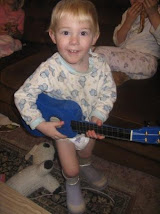

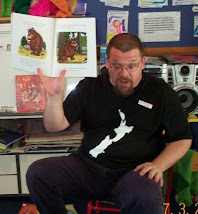
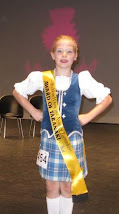
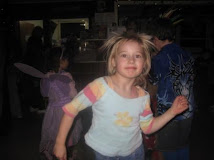
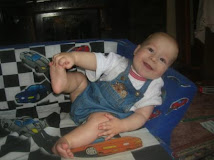
No comments:
Post a Comment